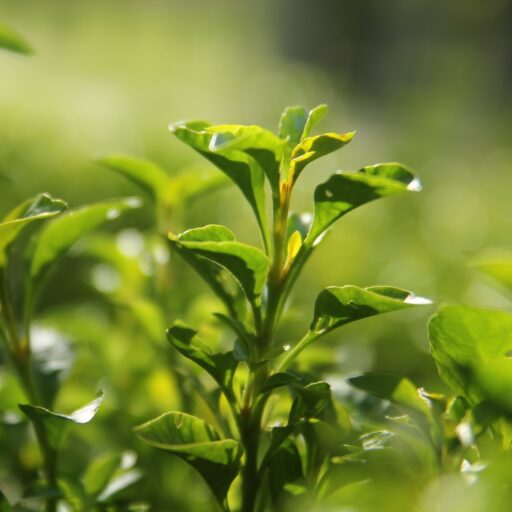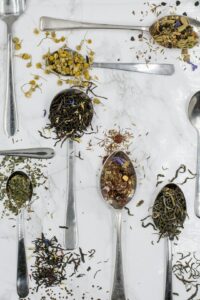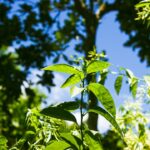Support our educational content for free when you purchase through links on our site. Learn more
What Climate is Needed to Grow Tea? [2023]
If you are a tea lover and looking to grow your own tea, the first thing that comes to mind is the right climate for the tea plant. The tea plant, Camellia sinensis, requires specific climatic conditions to thrive and produce a high-quality tea. In this blog, we will cover everything you need to know about the climate suitable for growing tea.
Climatic Conditions for Growing Tea
What Kind of Environment is Required for Tea Plantation?
The tea plant is native to East Asia, where the climate is warm and humid. The optimum temperature range for tea plantation is between 65 and 85°F (18 and 30°C), and it requires an annual average rainfall of at least 60 inches (152 cm). The tea plant also needs to be grown at high altitudes, usually above 3,000 feet (900 m) above sea level, where there is ample sunlight to encourage growth and where the plant can enjoy a cool breeze.
Humidity and Precipitation for Growing Tea
Tea plants love humidity, but too much rainfall can affect the yield and quality of tea. The tea garden requires at least 60 inches (152 cm) of rainfall per year. This rainfall should be well-distributed throughout the year, with no extended dry periods. In areas with monsoons, the tea plants should receive at least 6 to 7 inches (15 to 18 cm) of rain per month during the rainy season. High humidity is beneficial for tea plants and helps them grow faster. Tea plants never tolerate water-logged soils, so it is important that the soil drainage is proper.
Temperature for Growing Tea
The tea plant favors mild to warm temperatures. Extreme heat and cold can affect the quality of tea. Tea plants grow well in temperatures ranging from 65 to 85°F (18 to 30°C). It's important to remember that the temperature should not drop below 55°F (12°C) or go above 95°F (35°C) during the growing season. The correct temperature range is essential for tea plants to produce good quality tea leaves.
The Light
Tea plants require ample sunlight to grow and thrive. Tea plantations need at least 4 hours of direct sunlight per day. The best time for the sunshine is morning sunlight because it can help plants produce enough photosynthesis through the day. In addition, tea plantations should be shielded from hot and strong winds.
Soil and Terrain
Apart from climatic conditions, the soil and terrain also play a key role in tea cultivation. The soil should be rich in organic matter and well-draining so that it can absorb adequate moisture. Tea plants thrive in loamy soils that are slightly acidic (pH 5.5 to 6.5) and can retain moisture well. The terrain of the land should be well-drained, sloping, and protected from strong winds.
Can Tea Grow in Cold Climates?
The tea plant is a hardy plant that can survive in cold climates. However, growing tea in cold climates is challenging because the plant needs warmth to grow and produce good quality tea. The plant will grow slowly in cold climates, and the flavor of the tea may be affected. The plants would also require added care and protection to avoid being damaged by the cold and keep the soil warm.
What States Can You Grow Tea?
Tea can be grown in any state with suitable climatic conditions. However, the best states to grow tea in the United States are Hawaii, California, Oregon, Washington, and New York. The best region in the world to grow tea is around the equator where the climate is continuously warm.
Where is the Best Place to Grow Tea?
The best place to grow tea is in high-altitude regions with a cool climate, plenty of rainfall, and well-draining soil. This climate provides an ideal growing environment for tea plants. Some of the best tea-growing regions in the world include Darjeeling, Assam, Sri Lanka, Japan, Kenya, and China.
Quick Tips and Facts
- The tea plant requires a cool breeze and should be planted in well-drained soil
- The plant prefers mild to warm temperatures ranging from 65 to 85°F (18 to 30°C)
- Tea plants require ample sunlight, at least 4 hours of direct sunlight per day, while the best time to produce photosynthesis is morning sunshine
- The best regions for tea-plantation are high-altitude regions with a cool climate, plenty of rainfall, and well-draining soil
- Tea can grow in any state, but the best states to grow tea in the United States are Hawaii, California, Oregon, Washington, and New York
FAQ
Can Tea Grow in Cold Climates?
Yes, tea can grow in cold climates. However, the flavor of the tea may not be as good as tea grown in a warm climate.
What States Can You Grow Tea?
Tea can be grown in any state with suitable climatic conditions. However, the best states to grow tea in the United States are Hawaii, California, Oregon, Washington, and New York.
Where is the Best Place to Grow Tea?
The best place to grow tea is in high-altitude regions with a cool climate, plenty of rainfall, and well-draining soil. Some of the best tea-growing regions in the world include Darjeeling, Assam, Sri Lanka, Japan, Kenya, and China.
How Much Water Do Tea Plants Need?
Tea plants need at least 60 inches (152 cm) of water per year, with well-distributed rainfall throughout the year.
What is the Ideal Temperature Range for Tea Plantation?
The ideal temperature range for tea plantation is between 65 and 85°F (18 and 30°C).
Conclusion
In conclusion, growing tea requires specific climatic conditions that include the right temperature, rainfall, and sunlight. Tea plants also need to be grown at high altitudes, in well-drained soil, and in an environment with a cool breeze. The best places to grow tea are high-altitude regions with ideal climates, and the best states to grow tea in the United States are Hawaii, California, Oregon, Washington, and New York. With the right conditions and proper care, anyone can grow their own tea and enjoy fresh, homemade tea. Happy tea growing!
References
[1] Tea species and cultivars: diversity, history and utilization/Chapters: Climate and soil requirements (2022)
[2] Growing tea in the United States
[3] Tea Cultivation | Tea Garden India






